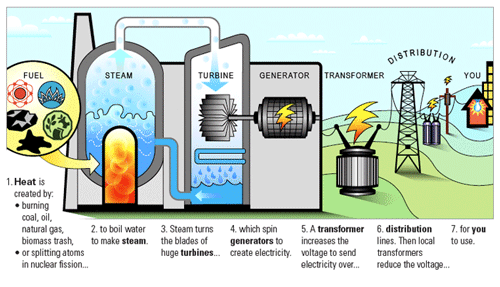how does biomass energy generate electricity
Biomass
Question 1: What is biomass?
Answer:
Biomass refers to organic materials, such as plants, wood, and waste, which can be used to generate energy. It is a renewable source of energy because it comes from living or recently living organisms.
- Examples of biomass include wood pellets, agricultural residues, and dedicated energy crops.
- Biomass energy can be used for heat, electricity, and transportation.
- Burning biomass releases carbon dioxide, but because plants absorb carbon dioxide during growth, it is considered a low-carbon or carbon-neutral energy source.
- There are various technologies for converting biomass into energy, including combustion, gasification, and anaerobic digestion.
- Biomass energy can help reduce reliance on fossil fuels and decrease greenhouse gas emissions.
- However, the sustainability of biomass as an energy source depends on responsible management practices, such as using waste materials and ensuring land and water resources are not overexploited.
Question 2: How is biomass energy produced?
Answer:
Biomass energy can be produced through various processes:
- Combustion: Biomass is burned in a boiler or furnace, producing hot gases that can be used for heat, electricity generation, or both.
- Gasification: Biomass is heated in a gasifier, where it undergoes chemical reactions to produce a synthetic gas (syngas) composed of carbon monoxide, hydrogen, and methane. The syngas can be used in gas turbines or combustion engines to generate electricity.
- Anaerobic digestion: Organic waste, such as animal manure or food scraps, is broken down by bacteria in an oxygen-free environment, producing biogas (mainly methane) that can be used for heat or electricity.
These processes require appropriate technology and infrastructure to efficiently convert biomass into energy.
Question 3: What are the environmental benefits of biomass energy?
Answer:
There are several environmental benefits associated with biomass energy:
- Renewable and sustainable: Biomass is derived from plants and organic waste, which can be replenished naturally or created through responsible waste management.
- Low-carbon or carbon-neutral: While burning biomass releases carbon dioxide, the carbon emitted is offset by the carbon dioxide absorbed during the growth of plants used for biomass production. This makes biomass energy a net-zero or low-carbon source of energy.
- Reduced greenhouse gas emissions: Biomass energy can help decrease reliance on fossil fuels, which contribute significantly to greenhouse gas emissions. By using biomass instead of fossil fuels, we can lower carbon dioxide and other pollutant emissions.
- Waste reduction: Biomass energy can be produced from agricultural residues, forestry by-products, and organic waste materials, reducing the need for landfilling or incinerating these materials.
Question 4: What are the challenges associated with biomass energy?
Answer:
While biomass energy has several benefits, there are also challenges that need to be addressed:
- Resource availability and sustainability: The production of biomass relies on the availability of organic materials. Ensuring a sustainable supply of biomass without overexploiting land and water resources is crucial.
- Efficiency and technology: Biomass energy conversion technologies can have varying degrees of efficiency. Improvements in technology are necessary to maximize energy output and minimize emissions.
- Economic viability: The economic feasibility of biomass energy depends on factors such as the cost of biomass feedstock, energy prices, and government policies and incentives. Making biomass energy economically competitive with other energy sources is essential.
- Land and water use conflicts: Biomass energy production should not compete with essential agricultural land or compromise water resources. Responsible land and water management practices are necessary.
Question 5: How does biomass energy compare to other renewable energy sources?
Answer:
Biomass energy has both similarities and differences when compared to other renewable energy sources:
- Solar and wind energy: Biomass, solar, and wind energy are all considered renewable sources. However, biomass energy is not dependent on weather conditions like solar and wind power, making it more reliable and predictable.
- Hydropower: Biomass and hydropower both involve utilizing natural resources to generate energy. However, hydropower relies on flowing water, while biomass uses organic materials. Biomass can be more widely accessible compared to suitable hydro resources.
- Geothermal energy: Geothermal energy harnesses heat from the Earth's core, while biomass uses organic materials. Geothermal energy is limited to specific regions, whereas biomass can be produced in various locations.
The choice of renewable energy source depends on factors such as resource availability, geographical location, and specific energy needs.

Post a Comment for "how does biomass energy generate electricity"